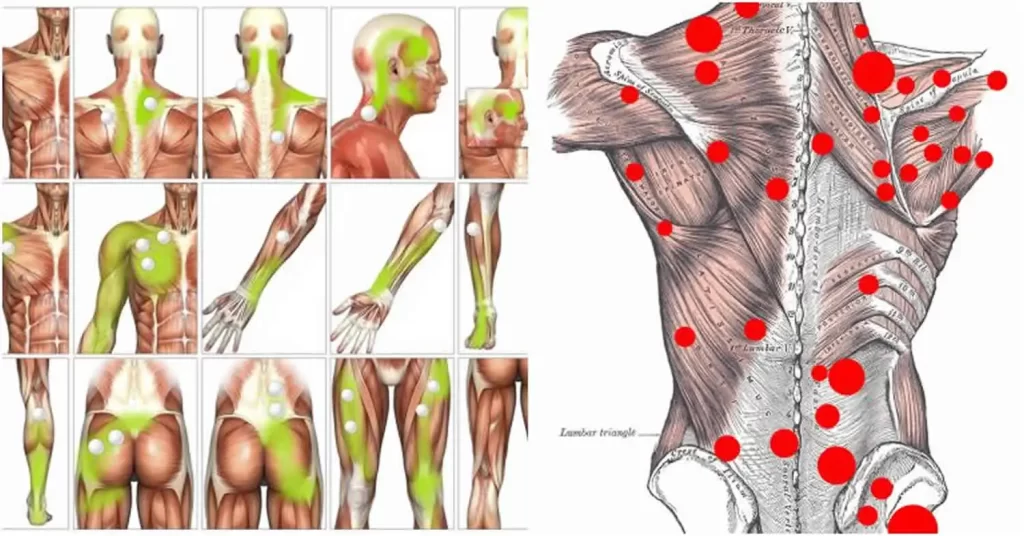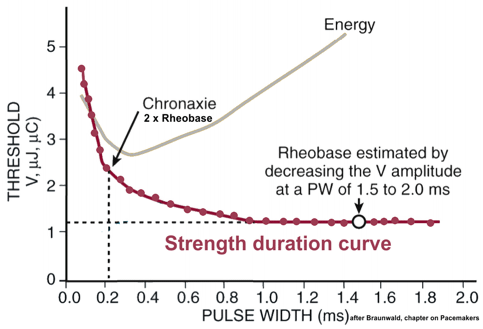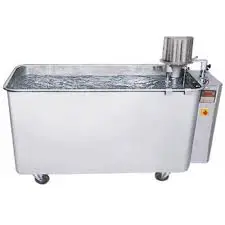Trigger point release therapy
What is trigger point release therapy?
The trigger point release is a general term that describes procedures that relieve pain and relax tension in the muscles that contain trigger points. they do not usually eliminate the underlying trigger point, so unless further treatment is given relapse is generally inevitable. It generally refers to manual techniques involving pressure and stretching muscles, but can also refer to other techniques such as the use of needles. Because relieving pain and relaxing tension is major goals of trigger point therapy the terms trigger point release and trigger point therapy are often used interchangeably.
Myofascial Trigger Point Therapy, also called ” Trigger Point Therapy “, refers to the treatment of myofascial trigger points or ‘trigger points that are found in muscles and fascia. Myofascial trigger points are painful and tense areas that are found in muscles. Myofascial trigger points affect muscles and fascia. Myofascial trigger points could be found anywhere on the body and are one of the most common causes of chronic musculoskeletal pain, also known as myofascial pain. A therapist can release these painful and tense points in a muscle and assist in achieving long-term results. There are mainly two primary methods for treating trigger points, Dry needling, and Manual Trigger Point Therapy.
Trigger point therapy is a soft tissue technique that works to release pain and tension in muscles and fascia that you would generally experience as a knot in the muscle. There are many different approaches are to trigger point therapy including soft tissue work, ischemic pressure, deep tissue massage, and dry needling.
Trigger Point Release involves applying pressure with a finger or any other instruments to the trigger point and increasing the pressure as the trigger point “releases” and softens. There is numerous variation in this technique.
You should experience relief of pain during the first treatment. Sometimes many treatments are needed before your pain starts to reduce. It is common for a few people to experience some soreness for one to two days after treatment. This generally resolves after the first few treatments.
Once TrPs(trigger points) are released the muscle needs to be moved throughout its full range. Simple exercises prescribed by your physical therapist to do at home are important in retraining the specific muscle. Back to normal activities without pain are most often accelerated by adherence to your specific self-care program.
Trigger points (TrPs) are hyper-irritable spots generally found in muscle that can appear anywhere throughout the body, most typically on the neck, the shoulders, and the back. These tense and tight “knots” can lead to pain and discomfort, often as sharp spasms or as a dull ache. The most common causes of trigger points are poor posture or postural abnormality, muscle, and joint overuse, chronic stress condition, and sleep disturbance or poor sleep. In addition, any muscle that is in a chronically shortened position or spasm is predisposed to trigger point development.
Trigger point therapy often referred to as myofascial release or pressure point massage, involves the application of gentle yet firm pressure to specific areas along the body, called pressure or trigger points. This pressure is provided by a skilled physical therapist trained in pressure point release. Sometimes, the therapist may choose to use certain devices or tools to assist with force application.
The manual pressure provided by a therapist during trigger point therapy treatment is intended to relax and normalize trigger points within the fascia, a widespread, sheath-like, fibrous tissue encasing your musculoskeletal structures. Fascia, which is normally flexible and pliant. it is important for protecting muscles, tendons, ligaments, bones, and nerves and helps them move together in a coordinated way. although, when stress, injury, repetitive movement, poor posture, or poor nutrition or hydration is imposed on the body, the fascia can become inelastic and stiff. This restricts the normal movement of the connective tissues beneath, causing pain, immobility, and even an increased risk of injury.
Trigger point therapy is intended to “release” the tension and stress in a fascia. and another structure within targeted treatment areas, thus restoring normal movement, relieving pain, and decreasing your risk of further tissue damage.
What are trigger points?
Trigger points are those tender lumps in the muscles that therapists find. They begin small, and you only know they are there when a therapist gently presses upon them. Over time they can grow to where they are quite substantial but still not causing pain, but will eventually start shooting pain when they are aggravated.
A trigger point is a sore point in a muscle when you push on it or what most people would be called a knot. You know that bit of the muscle when you are rubbing your tight shoulders that just does not feel right and hurts? When a trigger point is very sensitive it can lead to pain without being pressed on and this is a major cause of muscular pain that most people suffer from.The trigger points(TrPs) are a “hypersensitive nodule within a taut band of tissue that can be referred to as pain”.
Trigger point chart

There are three types of trigger points active trigger points, latent trigger points, and satellite trigger points.
- Active trigger Point:The active trigger point is defined as causing pain when no pressure is placed on them. and this means they are painful even if you are not massaging them. This is only one of the most common causes of Myofascial pain and it can be experienced in any area of the body. Common eg, active trigger points are back pain including sciatica, knee pain, neck pain, headaches, and so on. where you gently press and the red areas are the referral pain pattern. This helps diagnose where the trigger points are.
- Latent Trigger Points:A latent trigger point is a point you gently press on that causes pain and often refers pain to in another area. This type of trigger point is seen as the precursor to active trigger points. If you have this type of trigger point that gets worse through further strain then they can become active trigger points and that is when you generally feel pain and that need anyone to help you get out of the pain.
- Satellite Trigger Points:The satellite trigger points are an area where the pain is referred to. For example, if you are to get pain in the shoulder and you found that the trigger point was in the shoulder referring to the elbow, the elbow points would be these types of trigger points. And so you will be also working on these elbow trigger points as they would be involved as well.
How should the patient prepare for trigger point therapy?
To maximize the effectiveness of patient care, our physical therapist team encourages the patient to wear comfortable clothing and sturdy supportive shoes essentially, anything you’d be comfortable working out in. Of course, while much of the physical therapy services do involve active participation from you as a patient, manual therapy sessions which include trigger point therapy allow you to take more of a passive, restorative role.
Know that when the patient first arrives for your initial consultation, one of our physical therapists will take you through a thorough patient history questionnaire and physical examination. You will be encouraged to ask a few questions along the way to help us gain insight into your unique condition and help us provide you with an accurate diagnosis and plan of care, which may include manual therapy as well as additional evidence-based physical therapy services such as therapeutic exercises, modalities, and joint mobilizations.
We always encourage our patients to stay well-hydrated both before, during, and after the treatment. Water is essential to helping the body heal, and the effects of both active and passive therapeutic services (including pressure point massage) are amplified when you drink plenty of fluids. Aim for one-third to one-half of your body weight in fluid ounces in one day, or more if you exercise a lot or have a physically demanding job.
Methods of Trigger Point Release Therapy
There are some ways you can release a trigger point. The most common way is using sustained pressure with the thumb, fingers, elbow, or a massage ball or some tool. Dry needling is also a form of trigger point therapy that is becoming more extensive as its effectiveness is being seen.
Manual therapy for Trigger Points: this generally involves sustained pressure on the trigger point until it releases. If you find the nodule within the taut band of tissue you hold pressure on it until the pressure starts to decrease. This may take from thirty seconds to a few minutes. If the trigger point is chronic then it may take multiple sessions to release this pain. You can try this will the ball to help to release the trigger point. This method is also called ischemic pressure.
Dry Needling: dry needling method has become an increasingly common way to release trigger points. An acupuncture needle is inserted into the trigger point of a muscle to elicit a twitch response in the muscle. By twitching a muscle the needle is getting the muscle to contract and relax which can help the body to “let go” of this contraction of muscle tissue. Dry needling also helps the nervous system to become desensitized to the pain which will help you to feel no pain or decreased pain after the treatment. Dry needling also helps to get more blood flow into the muscle and that helps attract more nutrients to the area.
How does trigger point release therapy work?
Trigger point releases therapy relaxes the muscles and decreases pain by disrupting the core positive feedback loop. This can be done at any stage. For eg, massage will help relax muscles, and improve blood flow which helps remove waste products.
The Trigger point is one part of the muscle that has gone into spasm or cramped. The tightness presses on blood vessels and restricts blood flow. This deprives the muscle of oxygen and causes a build-up of toxic wastes, causing pain, which triggers more spasms. Typical manual trigger point release techniques relieve the tension of muscle by stretching the muscles, and squeezing out the wastes, allowing fresh blood to flush the muscle.
Is trigger point release therapy effective?
According to reviews of clinical trials of trigger point therapies (1–3), the goal of trigger point release is to stop the trigger points referring to pain. They typically manage to do this. though, none have been shown to effectively remove the trigger points. The problem is that even without leading to pain the remaining trigger points still lead to quite serious issues, and of course, they generally become painful again.
What conditions may benefit from trigger point therapy?
Fascial tissue is located throughout your body. and so adhesions and activated trigger points anywhere within this tissue can affect a wide number of physiological systems and structures. The physical therapy team has found myofascial release therapy to be effective for numerous conditions, including:
- Sciatica
- Carpal tunnel syndrome
- Medial epicondylitis and lateral epicondylitis (golfer’s elbow and tennis elbow, respectively)
- Whiplash
- Osteoarthritis
- Adhesive capsulitis (frozen shoulder)
- Headaches and migraines
- Neck pain
- Back pain
- Thoracic outlet syndrome
- Temporo-Mandibular Joint (TMJ) disorder
Prevention
Several of the preventable suggestions to follow are also pain management strategies:
- Maintain proper sleep hygiene.
- Reduce your stress.
- Get exercise.
- Prevent muscle injury. (this is an eg, of preventing muscle injury, if the shoulder bag or purse you carry is too heavy).
- Practice relaxation methods.
- Eat a proper healthy diet, like the Mediterranean diet.
Some foods lead to inflammation. and inflammation increases myofascial pain. Some foods to avoid include:
- Fried foods (French fries, for example).
- Dairy products (milk, cheese, yogurt).
- Refined carbohydrates and foods with refined flour such as pizza, pasta, pastries, breakfast cereals, and white bread.
- Margarine (butter), vegetable oil.
- Sugary foods and beverages like soft drinks.
- Red meat (burgers, steaks).
- Artificial sweeteners and general additives are “no sugar added” products, zero-calorie “diet” soft drinks, and processed foods that include candy, ice cream, and fruit.
- Processed meat like hot dogs, and sausage.
DISCLAIMER:
This article is intended or purposeful for your general informational purposes only and does not address particular circumstances. it is not a substitute for professional advice(or guidance) or help( or assistance) and should not be relied on to make decisions of any kind. A few or any actions you take upon the information presented in this article are strictly at your own risk and responsibility.







15 Comments